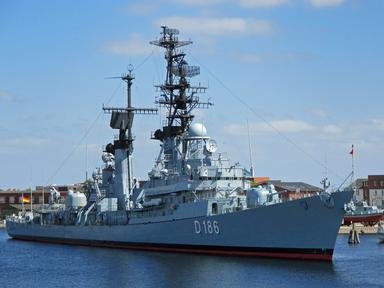Quiz Answer Key and Fun Facts
1. Which naval battle is considered to be the most decisive engagement between capital ships in the age of steam?
2. Besides The U.S. Navy, what other navy operates a nuclear powered aircraft carrier?
3. Has any one ever been executed for mutiny in the United States Navy?
4. According to COLREGS (International Regulations for Avoiding Collisions at Sea or Rules of the Road) a vessel is underway when it is;
5. In the Royal Navy the First Lieutenant is;
6. In the United States Navy the First lieutenant is;
7. Which was the largest warship ever sunk?
8. Who was the only U.S. Naval officer to hold the rank of Admiral of the Navy?
9. In the 18th Century, John Harrison, an English landsman, perfected what was arguably the most important advance in marine navigation in the previous two centuries. What was it?
10. In the latter half of the 19th Century a relatively obscure United States Naval captain exerted great influence on geopolitical and strategic thinking and planning in the major navies of Europe. Who was he?
Source: Author
clemmydog
This quiz was reviewed by FunTrivia editor
gtho4 before going online.
Any errors found in FunTrivia content are routinely corrected through our feedback system.

